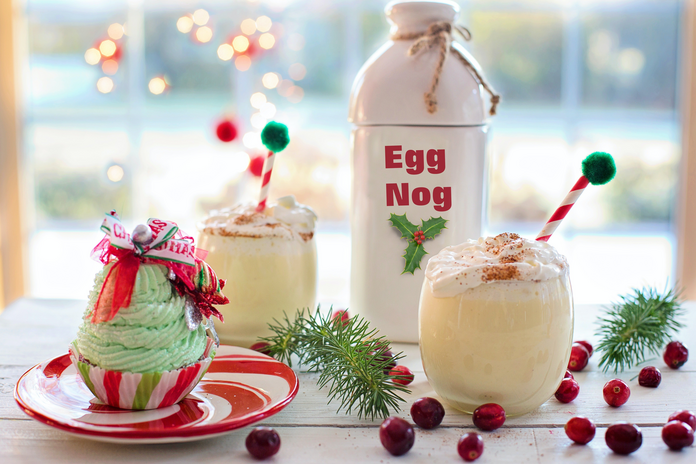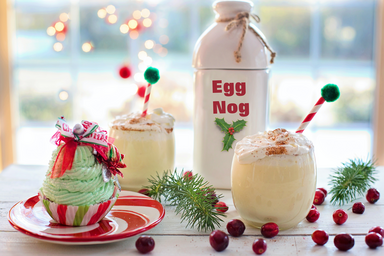December is finally here! The angels are up on Regent’s Street, Starbucks is selling gingerbread and eggnog flavoured drinks, houses everywhere are dotted with little sparkly lights, and best of all, I can finally listen to Christmas songs without any judgement or care in the world.
But, whilst roast potatoes and ice-skating may be considered traditional ways of celebrating Christmas in the UK, across the globe it is celebrated in so many different and interesting ways. So, from artificial cobwebs to roller-skates, let’s go on a journey through some of the most interesting ways Christmas is celebrated across the world.
- JAPAN: KFC for Christmas Dinner
-
This Japanese tradition is said to have started after one foreigner, in the absence of turkeys and other Western Christmas staples, turned to KFC to cater her kindergarten Christmas party. She had further requested that the food be delivered by someone dressed up as Santa. Takeshi Okawara, the store manager (and CEO of KFC Japan from 1984-2002), agreed, donning the costume himself, and was so successful with the kindergartners that multiple other schools started calling for the same service.
Realising that there was a gap in the Japanese market, this prompted KFC to launch its first ever Christmas campaign in December 1974, and with it, the slogan ‘kurisumasu ni wa kentakkii!’ or ‘Kentucky for Christmas!’ was born. Nowadays, KFC Japan makes a third of its annual sales between December 23rd and Christmas day, with wait times of up to two hours and many pre-ordering their KFC Christmas-only ‘party barrels’ as early as November. These barrels, inspired by the traditional American dinner, include cake, salad, wine, and of course, fried chicken. Across the country, KFC locations also dress Colonel Sanders up in Santa Claus gear to help get people in the festive spirit.
- AUSTRIA: Krampus, St Nicholas’ Evil Counterpart
-
According to folktales, Krampus roams the streets searching for and punishing naughty children on behalf of St Nicholas (aka Santa). To celebrate this tale, on the night before the Feast of St Nicholas (the evening of December 5), people dress up as the folkloric creature, in costumes that often include large horns, fur and demonic masks. Some wear bells to alert others to their presence, whilst others hold pitchforks, sticks or torches, and some even carry sacks, inspired by the stories of Krampus kidnapping naughty children to torture in his lair. They walk the streets in processions known as Krampuslauf, doing acrobatics, juggling torches, and flicking observers with their whips and sticks. Some have even been known to chase bystanders.
- ICELAND: The Yule Lads
-
In Iceland, children get not one, but thirteen Santas! For the thirteen nights leading up to Christmas, children will leave their best shoes by their window, and each night a different Yule Lad will bring them gifts (if they have been good) or rotting potatoes (if they have been bad). In return, the children may leave them some little gifts or snacks like laufabread (leaf bread) – a thin, crispy Christmas flatbread.
Each of these mischievous Yule Lads is said to have a distinct personality and behave in their own peculiar way, often indicated by their name. Hurðaskellir (door-slammer) is known to slam doors whilst Kertasnýkir (Candle Stealer) steals candles.
Children in Iceland must also contend with Gryla. Part troll and part human, she comes down from the mountains on Christmas Day to boil and eat naughty children. Legend has it that she lives in the mountains with her husband, the Yule Lads (who are her sons), and a huge black cat called the Christmas cat, who travels the country on Christmas Eve and eats anyone not wearing at least one new item of clothing.
- CZECH REPUBLIC: Baby Jesus
-
It is a popular belief that gifts aren’t delivered by Santa but by Baby Jesus. Whilst there is no real explanation or images to depict exactly how he does this, many believe that the gifts are delivered through an open window. The gifts are most often delivered during Christmas dinner, though they can be delivered at any time, and their arrival is announced with the ringing of a bell. Baby Jesus is also said to live in the mountain town of Bozi Dar, where the post office accepts and stamps letters addressed to him.
But don’t worry! Santa hasn’t been fired or left unemployed. He just delivers presents on St Nicholas Day instead.
- VENEZUELA: Roller-Skating to Mass
-
For many, roller-skating to Christmas mass has become a tradition in the Venuzualan capital of Caracas. In fact, the tradition is so popular that the government took to closing the streets to cars and other motor vehicles until 8am so that families could safely skate together. No one knows how or why this tradition started but many believe that it is Venezuela’s tropical alternative to sledding.
- UKRAINE: Spider-Webs on the Christmas Tree
-
According to ancient storytellers, there once was a widow who could not afford to decorate the family Christmas tree. Her children, who had worked hard to grow the tree and made many plans about how they would decorate it were greatly saddened by this, and went to bed on Christmas Eve sobbing heavily. But, hearing the children’s sobs, the household spiders spun beautiful and intricate webs around the tree that, in the sunlight, turned into silver and gold, and from that day on the widow never wanted for anything again. To celebrate this legend, many Ukrainians decorate their trees with artificial spider webs, believing that it will bring them good luck in the coming year.
- CZECH REPUBLIC: Foretelling the Future
-
An old tradition says an unmarried woman should throw a shoe over her shoulder. If it falls pointing towards a nearby door, she is likely to get married in the coming year. Another belief is that you can determine your luck by cutting an apple in half (horizontally). An apple core with four corners equals bad luck, but one with five corners equals good luck.



